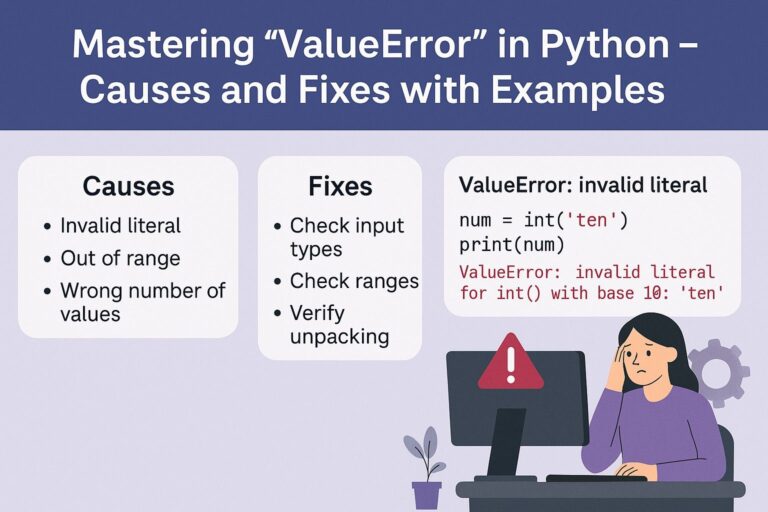
Recursion is a fundamental and elegant programming concept where a function solves a problem by calling itself to tackle smaller, simpler instances of the same problem. This approach is widely used in computer science, particularly in algorithms, data structures, and problem-solving, especially when tasks exhibit self-similarity or can naturally be broken down into repetitive subtasks.
For beginners, recursion might initially seem abstract or complex, but once understood, it becomes an invaluable tool for writing clean, efficient, and intuitive code. This article aims to clarify recursion by explaining its principles in detail, highlighting its usefulness, and walking through easy-to-follow examples.
What Is Recursion?
At its core, recursion occurs when a function solves a problem by repeatedly invoking itself with progressively simpler or smaller inputs until it reaches a well-defined stopping point, called the base case. The base case serves as a termination condition that prevents infinite recursive calls and allows the function to return a result directly.
By recursively breaking down a complex problem into smaller instances that resemble the original, recursion simplifies problem-solving and reduces the need for intricate loops or extensive state management.
Why Use Recursion?
Simplifies Complex Problems
Certain problems, such as tree traversals, factorial calculations, permutations, and Fibonacci sequences, naturally exhibit recursive structure. Recursive solutions mirror the mathematical or logical definition of such problems, making code easier to write and understand.
Enhances Code Readability
Recursive solutions can be concise and expressive, often requiring fewer lines of code than equivalent iterative approaches. This improves readability and maintainability, particularly for problems with hierarchical or nested structures.
Works Naturally with Hierarchical Data Structures
Data structures like trees and graphs are inherently recursive—each node can be viewed as a smaller tree or subgraph. Recursion fits these structures perfectly, allowing elegant traversal, searching, and manipulation.
Key Components of Recursion
1. Base Case
The base case is the simplest instance of the problem where the solution is straightforward and requires no further recursive calls. It acts as the exit condition, preventing infinite recursion.
2. Recursive Case
The recursive case involves the function calling itself with a smaller or simpler input, gradually approaching the base case. This ensures that the problem is reduced step-by-step until it becomes solvable directly.
Detailed Examples of Recursion
1. Factorial of a Number
The factorial function multiplies a positive integer by all the positive integers below it. It’s a classic example that naturally lends itself to recursion.
Mathematical definition:
- 0! = 1 (base case)
- n! = n × (n-1)! (recursive case)
def factorial(n):
if n == 0:
return 1 # Base case
else:
return n * factorial(n - 1) # Recursive call
print(factorial(5)) # Output: 120
Explanation: The function calls itself with decreasing values until reaching zero. Then it multiplies all returned values on the call stack, computing 5 × 4 × 3 × 2 × 1.
2. Fibonacci Sequence
The Fibonacci sequence is defined so that each number is the sum of the two preceding numbers.
Mathematically:
- fib(0) = 0 (base case)
- fib(1) = 1 (base case)
- fib(n) = fib(n-1) + fib(n-2) (recursive case)
def fibonacci(n):
if n == 0:
return 0 # Base case 1
elif n == 1:
return 1 # Base case 2
else:
return fibonacci(n - 1) + fibonacci(n - 2) # Recursive calls
print(fibonacci(6)) # Output: 8
Note: While intuitive, this implementation has exponential time complexity due to repeated calculations. Optimization using memoization or iterative approaches is recommended for large inputs.
3. Sum of a List
Recursion can also be used to compute the sum of a list by adding the first element to the sum of the rest of the list.
def recursive_sum(lst):
if not lst:
return 0 # Base case: empty list
else:
return lst[0] + recursive_sum(lst[1:]) # Recursive call
print(recursive_sum([1, 2, 3, 4, 5])) # Output: 15
4. Finding an Element in a List
A recursive function can search for an element by checking the first item and then recursively searching the rest.
def recursive_search(lst, target):
if not lst:
return False # Base case: empty list, not found
if lst[0] == target:
return True
else:
return recursive_search(lst[1:], target)
print(recursive_search([1, 3, 5, 7], 5)) # Output: True
print(recursive_search([1, 3, 5, 7], 4)) # Output: False
Important Tips for Using Recursion
- Always define a base case: Without it, recursion can lead to infinite loops and stack overflow errors.
- Understand the call stack: Each recursive call is placed on the call stack, consuming memory until base cases start resolving.
- Watch for performance issues: Deep recursion can be inefficient and may exceed maximum recursion depth limits in some languages.
- Use recursion when natural: Recursive solutions fit problems with inherent recursive structure, like trees or divide-and-conquer algorithms.
- Consider memoization: For recursive functions with overlapping subproblems (like Fibonacci), caching results improves efficiency dramatically.
When Not to Use Recursion
- When iterative solutions are more efficient or straightforward.
- If your problem size is very large and recursion depth might exceed language limits.
- When performance and memory consumption are critical constraints.
- In languages/environments without proper tail call optimization.
Conclusion
Recursion is a powerful concept in programming that breaks down complex problems into simpler, self-similar subproblems. By mastering the base case and recursive case, beginners can develop elegant, easy-to-understand solutions to many classic problems. Recursion’s real strength shines in algorithms and data structures with recursive nature, such as trees and graphs.
Starting with simple problems like factorial, Fibonacci, and list operations builds intuition that prepares you for more advanced applications.

I’m Shreyash Mhashilkar, an IT professional who loves building user-friendly, scalable digital solutions. Outside of coding, I enjoy researching new places, learning about different cultures, and exploring how technology shapes the way we live and travel. I share my experiences and discoveries to help others explore new places, cultures, and ideas with curiosity and enthusiasm.






